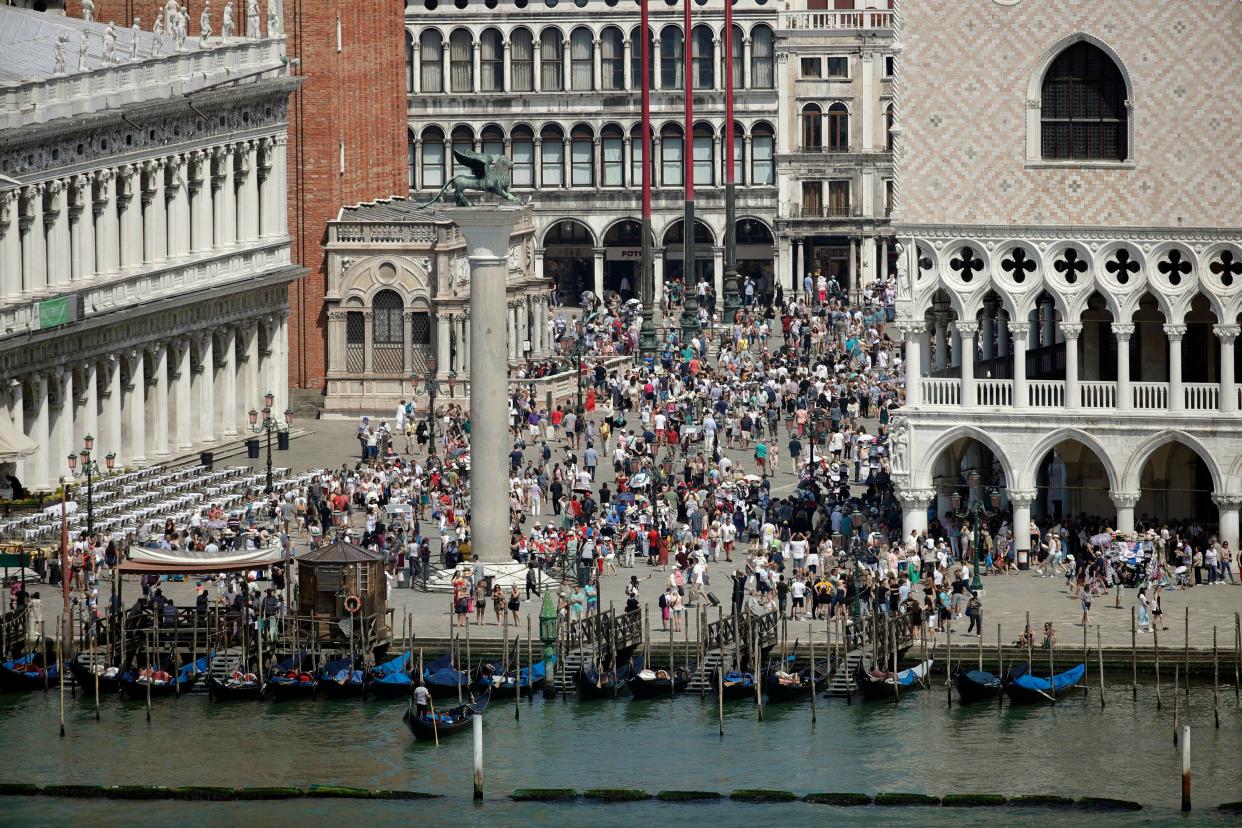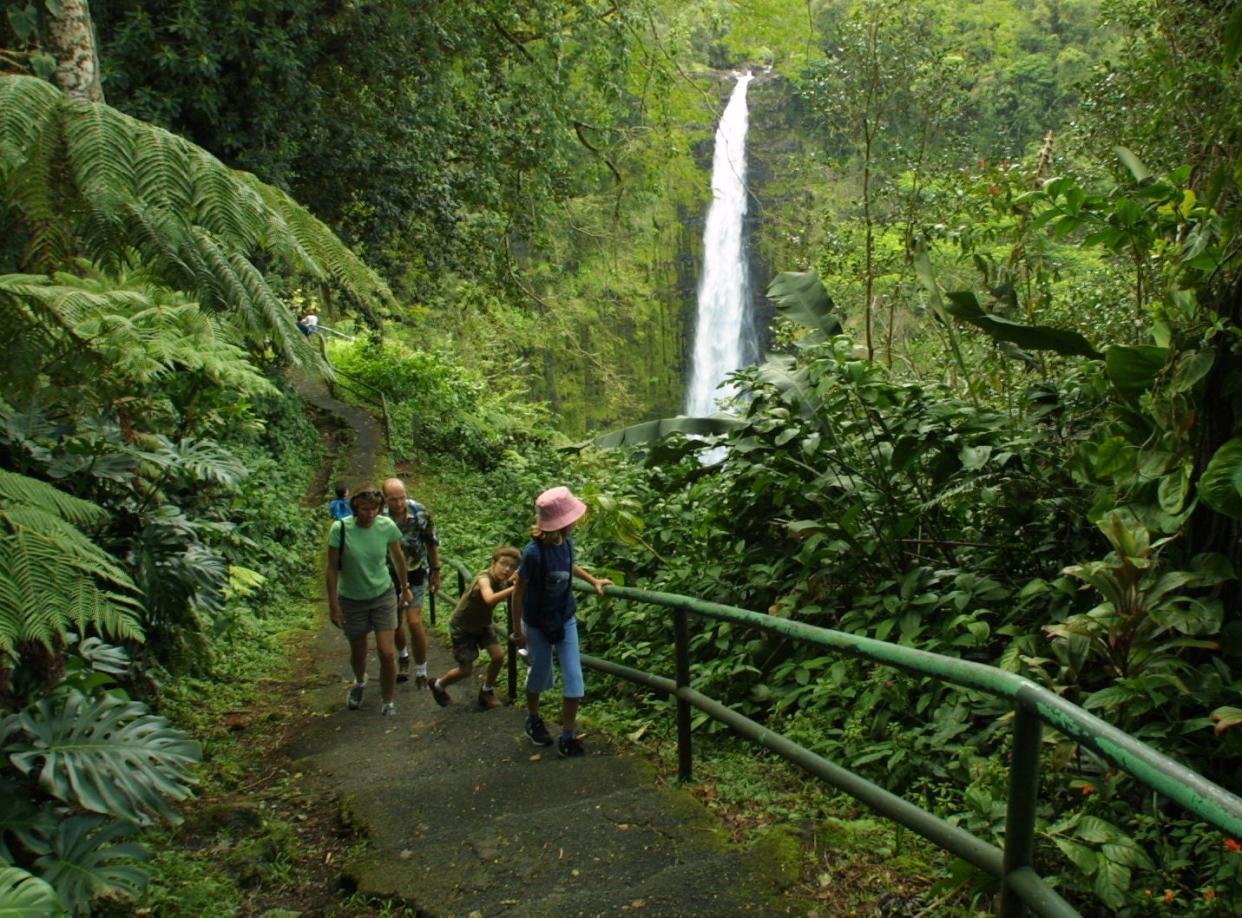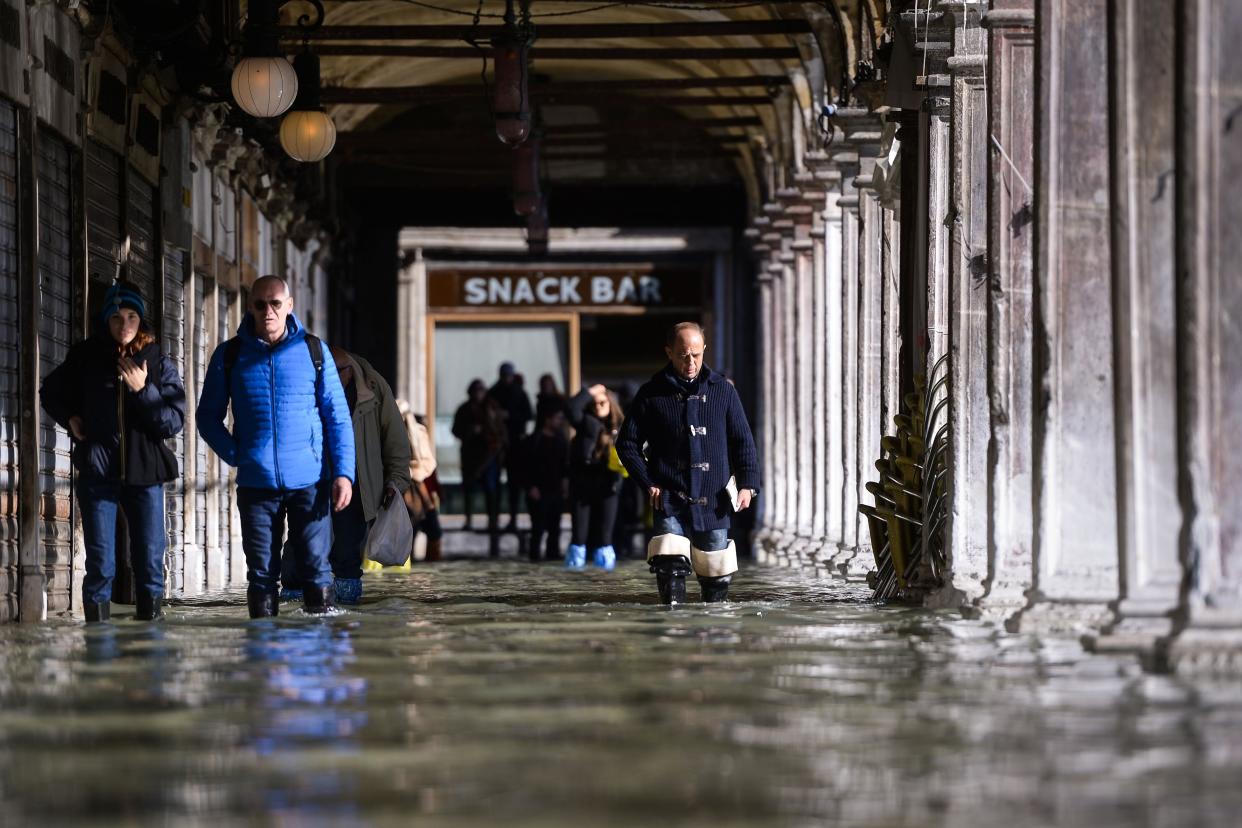Destinations behind a paywall? What to know about the increasing tourist fees worldwide.
Travelers to Venice will have to pay up to see its historic canals and islands, which are UNESCO World Heritage Sites.
To regulate heavy tourist traffic and “protect residents,” the City of Water announced tourist groups will be capped at 25 people – about half the capacity of a tourist bus – and ban loudspeakers, which create “disturbances,” according to the Italian city. Over the summer, crowds in St. Mark’s Square, the city’s main plaza, caused bridges to back up, and tourists saw overflowing trash cans.
The city said the biggest culprits are day-trippers, who don’t add much economic value to the city – like eating at local hotels or restaurants – while still putting pressure on the city’s infrastructure. In 2022, 30 million people visited the City of Canals, but only 3.2 million stayed overnight in the historic city center.
“I refuse to visit the city during tourist season even when friends and family are staying with me because the crowds are so crazy,” Nathan Heinrich, an American writer and designer who holds dual citizenship in Italy and lives just outside Venice, told USA TODAY.
This year, the city will trial a new day-tripper entrance fee of €5 per person ($5.44) during 29 peak days between April and mid-July. To enforce the fee, daytime visitors must register online and download a QR code, which officials will randomly ask to verify. If a traveler doesn't have the code, they can pay the tax on the spot along with an extra fine of up to €100 ($108.82).
What to do in Hawaii? Locals weigh in on if these popular spots are worth the hype

The news makes Venice the latest popular destination to increase fees aimed at tourists. Last year, Amsterdam announced it would increase its tourist tax by 12.5%, making it the highest in Europe. Closer to home, Hawaii failed to pass a widely supported bill in May that would make tourists pay for a $50 pass to enjoy the islands’ natural beauty.
As the demand to see and experience new places only strengthens, many popular destinations are working to add or increase fees aimed at the sheer number of travelers they get.
“There are concerns about overtourism and the strain it puts on the local infrastructure, the environmental impacts, and frankly it’s just a revenue stream,” Jason Block, CEO of travel advising company and a collection of travel brands known as WorldVia Travel Group, told USA TODAY. “You look at these places that are really dependent on tourism as an industry – and especially coming out of the pandemic where they lost a lot of that revenue – they’re playing a little bit of catch-up. They’re also seeing other destinations implementing without much impact to demand.”

Experts consider these fees the future of travel, so here’s how they are going to affect travelers.
What are tourist taxes?
Tourist taxes are “something virtually every destination has in some shape or form” as a way to generate income from travelers, Block said.
Nearly all destinations have a lodging tax, which is automatically added to your final hotel bill. Honolulu raised its lodging tax two years ago, adding up to 18% onto the hotel room rate. Destinations also have similar fees added onto final airline ticket prices or port charges if traveling by cruise ship.
More destinations are raising these fees to coincide with the increased demand. In January 2023, Aruba raised its lodging tax from 9% to 12.5%, and Amsterdam’s will rise from 7% to 12.5% this year.
As for entrance fees like Venice’s or the upcoming electronic visa for the United Kingdom, these are newer concepts, but Block fully expects them to stay.
“The lodging taxes have been there forever now, but you’re seeing places that have a separate environmental fee or levy or another line item, like an entry fee,” Block said. “You’ll see three, four, five line items. So it starts with your simple hotel transaction or a short weekend flight, a night in a hotel, and activities could have a lot of different tax lines.”
Where does the tourist tax revenue go?
It’s not all bad news for travelers, Block said.
The money from tourist taxes are more likely than not reinvested into the destination. Though the revenue is typically aimed at improving life for the residents, it will also “make the travel experience better,” Block said. “One of the worst things you can do is pay for your dream trip to Venice and have a bad experience because the sewers are overrun or the roads are bad.”
Not so hidden. Blame social media and pent-up demand for exposing your favorite hidden vacation spot

Iceland, known for its striking natural beauty, said it would broaden its accommodation tax to help protect its environment for future generations. The fee increase also aligns with the country’s goal to be carbon-neutral by 2040.
“Tourists are enjoying (these resources), so they should foot part of the bill,” Block said.
How are tourist taxes going to affect travelers?
It depends. As more places introduce more fees, there can be concerns of a lack of transparency, Block said. It’s crucial for travelers to look closely at the breakdown of their airfare or hotel room and not just base their budget off the advertised price, he added.
Though these fees seem inconsequential at first, they can add up. “When you add it all up for a week for a family of four, even if you’re sharing a single hotel room, that’s not insignificant,” Block said. Paris charges a flat €4 ($4.35) per person per night lodging fee, so for a family of four for seven nights, there’s an additional €112 ($121.88) on the hotel bill.
Despite this, many travelers support the fees if it means contributing to the destination’s sustainability.
"It's such a stunning place, with its canals and narrow alleys, but the sheer number of people visiting is putting a strain on it,” said Kayden Roberts, a digital nomad who visited in 2023. “Introducing a tourist tax here makes a lot of sense. It's not just about making money; it's about keeping Venice beautiful and preserving its cultural and historical treasures.”

Heinrich, the American designer, doesn’t think tourists will even bat an eye at the fees and will continue with their travel plans. “Anyone who can afford to take a trip to Italy can most likely afford a few extra euros to take a day trip into the city,” he said.
Others are worried the increase in tourist taxes could limit accessibility for travelers with lower budgets, but finding a solution is tricky. “This could be the start of a slippery slope of exclusivity that puts popular and important tourist destinations behind a paywall," said Heather Rameau, a content creator for travel brands based in Washington, D.C. “Ultimately, we all share this world and deserve access to see its beautiful places.
“Is there a need to better regulate and control the number of people visiting popular tourist spots, especially those that have a delicate ecosystem or are at risk due to climate change or other factors? Yes,” she said. “But is charging more money the way to do it? I'm not sure.”
Where has the highest tourist taxes?
Amsterdam: 12.5% of the nightly lodging rate
Barcelona: - Up to €6.25 ($6.80) per person, per night
Paris: - About €4 ($4.35) per person, per night
Dominican Republic: 23% of the hotel rate goes to taxes
Antigua and Barbuda: $100 for entry/exit fee
Honolulu: Up to 18% of the nightly lodging rate
This article originally appeared on USA TODAY: How increasing tourist taxes are going to impact travelers